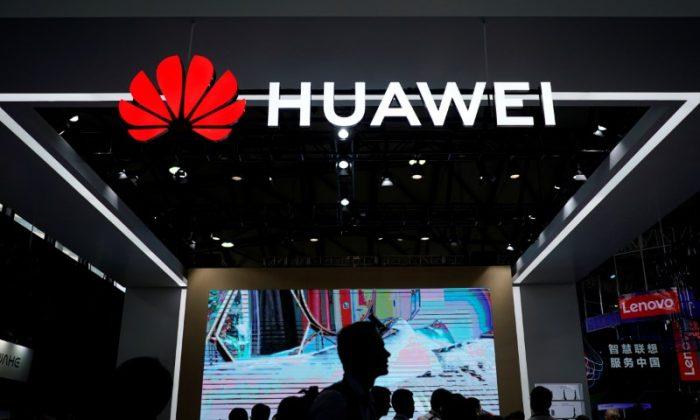In 1949, the year that China fell to communism, George Orwell published “Nineteen Eighty-four,” a novel set in a totalitarian police state led by Big Brother and watched over by the omnipresent Thought Police.
Nearly 70 years later, today’s Chinese Communist Party (CCP) has achieved much of Orwell’s dystopian nightmare. Relying on technology companies to surveil the Chinese people, the CCP has built a real-life Thought Police in the form of an urban digitization scheme known as “China Skynet” or “Safe City.”
The ‘Safe City’ Where Personal Freedom Is Not Safe
The Safe City program, run by the Chinese Ministry of Public Security, involves a massive volume of information and communications surveillance also known as the Skynet Project. This is part of the Chinese regime’s “stability maintenance,” which is a common euphemism for surveillance and suppression of the Chinese people.The facial-recognition technology that forms the backbone of Skynet was developed by Huawei under close cooperation with smaller companies such as Yitu, SenseTime, and Megvii.
In November 2017, BBC reporter John Sudworth experienced the efficiency of the Skynet Project in Guiyang, in southern China. He was caught by local police just seven minutes after having his picture captured by a mobile phone.
While promoted as a means of targeting crime, the Skynet system is commonly understood as a tool for spying on ordinary Chinese to keep them under control.
Huawei and Chinese Regime’s Surveillance State
Huawei holds a central role in the CCP’s Safe City program and is deeply involved in both Skynet Project and Blue Sky, another surveillance program used by the communist authorities.The rapid improvement of surveillance technology has featured heavily in the Party’s tracking and suppression of human rights, from adherents of the banned Falun Gong spiritual practice to members of the Uyghur Muslim minority living in northwestern China’s Xinjiang Province.
According to documents from the CCP’s Political and Legal Affairs Commission (PLAC), the primary task of the Skynet Project is to aid in the suppression of Falun Gong.
Falun Gong, a traditional Chinese meditative discipline, drew the Party’s ire in the late 1990s when the number of people practicing it had reached in the tens of millions. On orders of then-CCP leader Jiang Zemin, Falun Gong became the subject of a comprehensive persecution campaign that has continued to the present day.
During the construction of the Golden Shield, many Huawei products were adopted for practical use throughout the Chinese regime. For example, in December 2000, Huawei’s A8010 Refiner was adopted for use in the server in eGovernment.
Following the completion of the Golden Shield Project in 2005, both the PLAC and the Comprehensive Management Commission of the public security (Chinese police) authorities proposed expanded surveillance schemes. This led to the initiation of the China Skynet and Safe City initiatives. Starting that year, Safe City programs began construction in 31 Chinese provinces, autonomous regions, and municipalities.
According to Huawei’s 2014 white paper, the company boasted of its role in the Party’s surveillance, noting that it was China’s No. 1 network service and equipment supplier and, as such, was well-positioned to provide integrated solutions for the Safe City program. The white paper listed examples of Huawei’s participation in the Safe City projects in cities such as Hefei, Tianjin, and Changsha.
Huawei uses its dominance in the IoT (internet of things) market to facilitate greater penetration of regime surveillance into everyday life, using cloud computing and integrated command and control for video content management (VCM).
The episode in which the BBC reporter in Guiyang was tracked by that city’s Skynet program featured the technology of OceanStor, which was, in turn, provided by Huawei.
In Longgang District, Shenzhen, in southern China, the local public security bureau established a Cloud Data Center in the city. Huawei’s big data platform provides daily real-time storage and analysis of hundreds of millions of data and more than 4TB of images of license plates, face, and other information.
While Skynet primarily covers Chinese urban areas, the countryside is surveilled by a sister project called “Blue Sky.”
As an extension of Skynet, Blue Sky was developed in the name of creating a “safe and secure countryside,” with real-time video monitoring of everyone who owns a TV or mobile phone.
In 2016, pilot versions of Blue Sky were begun in the provinces of Shandong and Sichuan, with a combined population of nearly 200 million people. The next year, these projects had reached 29 provinces and cities.
In a construction work meeting held in June, Chen Yixin, secretary of the central PLAC, said that the Blue Sky project would achieve its goal of “global coverage, network-wide sharing, full-time availability, and full control” by 2020.
Huawei and Transformation of Xinjiang
The CCP’s heavy-handed rule in Xinjiang has intensified in recent years. The wanton detention of over a million Uyghur Muslims and the profusion of surveillance cameras, as well as a militarized police presence, has turned the autonomous region into a veritable concentration camp.As with surveillance across the rest of the country, Huawei has contributed significantly to the creation of even harsher conditions in Xinjiang. In August 2016, Huawei reported about its strategic cooperation with provincial regime authorities. Its cloud-computing system has been utilized by police in the city of Karamay as early as 2011.
In the 2014 China’s National Information Infrastructure report, it was noted that Huawei’s router ATN950A was chosen by Xinjiang Telecom to facilitate the local Safe City surveillance system. The ATN950A series have been successfully deployed to build the surveillance network covering major roads and commercial and residential areas.
In May of this year, the Xinjiang’s Public Security Department and Huawei signed a strategic cooperation agreement for a “peaceful and smart Xinjiang.” Fan Lixin, the department’s deputy director, said that Huawei had provided reliable technical support for the autonomous region’s authorities.





